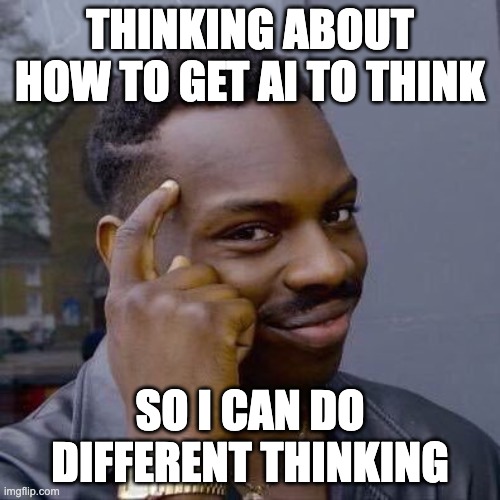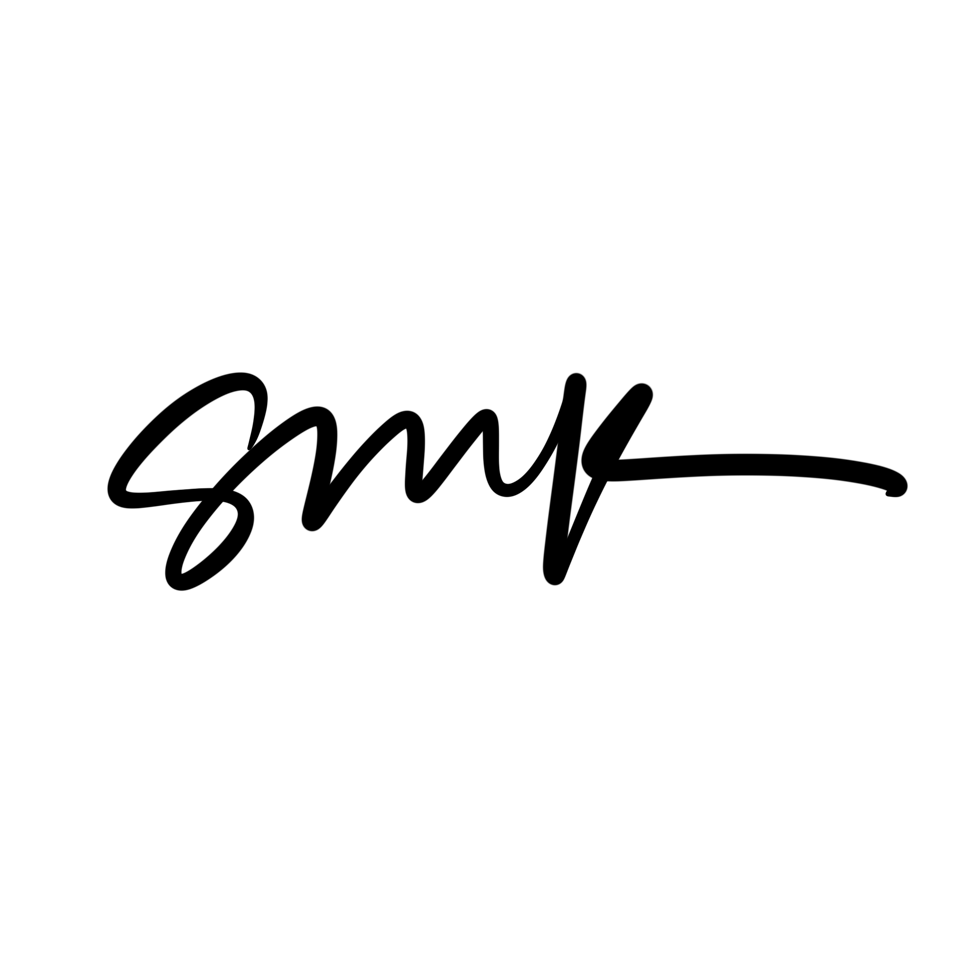The Humpty Dance
Exploring three possible futures of the economy - cognitive, fabrication, and bio-digital - and their impact on workforce.
Average reading time: 12 min (sorry)
alright, stop what you’re doin' 'cause I'm about to ruin
The image and the style that you’re used to
In this edition:
- Three possible futures and the forces that drive them
- Impact on the workforce and people, and the innate human skills you’ll need in any future
- The slippery, dystopian slope (slypopian?) to watch for

Last time, we talked about the big unraveling of corporate jobs and how uncertain that feels for so many people right now. Losing a job can be disorienting, stressful and destabilizing. It also sometimes opens up an entirely new chapter. The corporate model that contains our careers hasn’t been functioning at its best for awhile. We are in the messy transition from the Before Days to the Next Days. From Office Space to…hopefully not Elysium?
So, if the corporate model is receding (not actually going away), what comes next? I’ve been thinking about that and see three possible futures.
In order of increasing silliness:
- a Cognitive Economy, where thinking becomes infrastructure
- a Fabrication Economy, where making things reclaims power
- and a Bio-Digital Economy, where the body itself becomes part of the network (gag)
These scenarios aren’t fanfic - they’re observable and already underway. I’ll never be able to forecast which future will dominate, but let’s look at the systemic and behavioral adjustments each future requires of individuals, our organizations and our societies as we navigate a changing economic landscape.
The Cognitive Economy

Driving force: Artificial intelligence and the decline of repetitive knowledge work.
In this future, thinking becomes infrastructure: available on demand and embedded in everything. (Early evidence: Outlier) As machine cognition scales, human focus shifts toward framing questions, applying context and making meaning from what AI produces. Knowledge work slides down the Robot Curve, just as manufacturing once did, creating new value in the market at every node change.

For the Worker: People move from producing information to interpreting it. Coaching, ethics, data sense and human-centered design become essential. Those who can integrate judgment with automation will thrive. Workers, however, must develop literacy not just in using data but in questioning it - seeing bias, determining validity and being on the lookout for when algorithmic truth replaces physical truth.
Innate Human Capability: Cognition. The discipline of learning, reasoning and connecting insight to context. Society will need to strengthen its cognitive muscles through reading, reflection, monotasking and collaboration (thinking in groups). I BEG YOU HOWEVER TO START WITH A SINGLE HOUR ON YOUR SCHEDULE THAT IS ONLY FOR THINKING.
Slippery Slope: Ok in this future, overreliance on digital systems may weaken our physical and spiritual health. When thinking becomes increasingly outsourced (barf just typing that), we risk neglecting the stewardship of our bodies and inner lives. Physical movement, quality nourishment and rest will keep people grounded in reality and protect against replacing our lived experience with simulation.
How people spend time: Less time producing content, more time integrating and applying insight. Work evolves into sensemaking: connecting data, experience and understanding in new ways that shape decisions and deeper learning. It’s work that expands both knowledge and meaning, which I think is something to look forward to! Education includes things like adaptability, ethics and critical thinking - those skills that support alignment between human and machine reasoning.
The Fabrication Economy

Driving Force: Automation, portable energy, distributed and local production.
Manufacturing is becoming more personal and more precise. Smaller operations use flexible equipment and sustainable materials to produce what communities actually need, linking everyday life more closely with how things are made. Production methods shift toward smaller, smarter and more sustainable systems that respond directly to community needs. Automated micro-factories, robotics and 3D printing mean production is closer to - or located right where - people live.
For the Worker: Industrial and logistics jobs evolve into applied craftsmanship and technical trades. A scientific equipment glass blower shaping custom lab equipment, for now, can sleep soundly knowing her skills are far from replaceable. Electricians, machinists, robotic repair specialists and fabricators of custom components become central to local economies. In this future, apprenticeships, trade schools and hands-on learning programs regain prestige as more people recognize that college degrees carry heavy debt and poor returns. Stability and pride return for work that builds, fixes and reuses.
Innate Human Capability: Creativity. I don’t mean art and paint but when I say creativity, I mean the activity of creating. Modern knowledge work dismissed our natural ability for decades, treating it as a hobby. In this economy, creativity gets its due as people learn to make, modify and repair as a normal part of life. This is the realization of prosperity without growth: progress measured by how well we create, maintain and share.
Slippery Slope: Access and infrastructure will limit the who and how of participation. Communities with training cetners and small fabrication hubs flourish while others risk being left behind. As making spreads beyond factories and cities, large urban centers - already struggling with identify - may further lose their footing. It raises a question about what they become when cities are no longer a concentration of opportunity, but still retain infrastructure and housing for large populations. What happens in opportunity-scarce population?
The Bio-Digital Economy

Driving Force: The merging of biology and digital intelligence.
Advances in neuroscience, genetics and computing bring machines closer to our bodies and minds. Sensors track health, mood and focus. Interfaces read and influence physical and neurological states. We used to measure clicks and impressions, but next the signals may come from skin and cells (did i saw ew?).
For the Worker: Attention, emotion and instinct become measurable participation in this economy. Work shifts from task to presence - what you bring to an experience, not just what you produce and consume. You may find this unsettling (I do), but it will be Gen Z and Alpha who decide how far this goes. They’ll shape how much technology enters physical life while most of us watch from the sidelines (note to self: do not give power of attorney to son). It’s the next step in how humans and technology evolve together. I first saw this a decade ago while working with researchers at MIT Media Lab’s Fluid Interfaces Group, which explored direct interaction between body and machine. I even tried it myself last year, wearing a CGM (continuous glucose monitor) just to see what the data could show me. I was amazed, my husband was appalled (“You’re plugging into the matrix!”.
Innate Human Capability: Intuition. The ability to sense before logic, to recognize patterns in the absence of a map, and to discern what’s right without proof. In a world of constant measurement and feedback, intuition is one way to stay human. Harnessing and mastering our intuition helps us be alert, notice changes in the environment, being to sense pattern of both concern and curiosity.
Slippery Slope: Bodily autonomy. If you feel out of control over the barrage and tone of information you endure today, imagine a future where an advertiser can, within your mind, prompt you to take an Advil, or a preauthorized teacher can adjust a student’s Ritalin. I wonder how explicit the idea of consent can remain at this level of integration. On the one hand, I would not want things happening that I’d forgotten I approved, on the other hand I cannot imagine a worse hell than the Website Cookie Consent thing happening in my body (“Blink twice to proceed” lol).
How people spend time: Life alternates between connected and unconnected states. People clock in and out of the network - sometimes for work, sometimes for rest, sometimes for curiosity. Leisure takes new forms, mixing physical and digital experience. Time itself becomes the organizing structure: when we are online, when we are embodied, and how much of each we choose. What follows the corporate era may center not on ownership but access, agency and awareness - how humans and systems share the experience of being alive. No sir, I don’t like it.
don't forget to include a call to atcion for the close and a plug about the 6 capacities
We’re in a crazy time of change. It’s dawning on me that this is probably just how it feels as you cross from one world order to the next. The structures we’ve built are moving and the way we work, live and lead will move with them.
The 6 Capacities of Leadership were built for this transition. They help leaders expand their range and deepen their understanding - seeing more of the system around them, and responding with more intention. Reach out if you want to learn more about how these Capacities can expand your leaders’ ability to navigate when it seems no playbooks have the answer.
If these Human Skills piqued your interest, I’m hosting a free Human Skills For the Future team talk this month. It’s a short virtual session that focuses on the four essential skills for what’s ahead: intuition, cognition, creativity and contribution. Reach out before December 15th to set up time for me to bring this to your team at no charge. Local clients also have access to my exclusive creative space at The Getaway Minnetonka.
I’m offering Intro to Strengths sessions in November and December and a New Year Vision Board workshop in January. And, Seasonal Resets for Moms half day retreat is coming back this holiday season - registration opens soon!
The world of work is shapeshifting right in front of us and honestly I can’t believe we get to be a part of it.
What a time to be alive.
